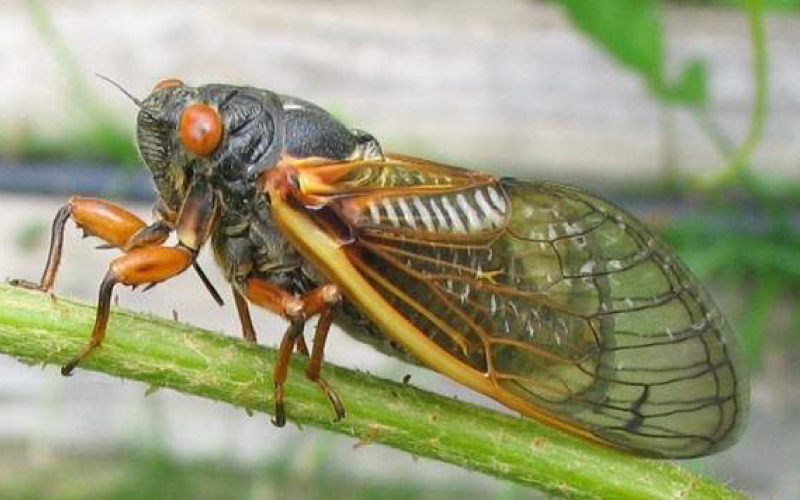Do you know which bug you can take to see an NC-17 movie? The 17-year cicada. It’s rocking much of the eastern United States this year.
Wait what?
A type of periodical cicada that emerges every 17 years will be here this summer. You guessed it, the last time they appeared was in 2003.
Why do they stay dormant for 17 years?
There could be an evolutionary advantage to appearing so infrequently. When you and your brood only come out every 17 years, it’s harder for predators to learn how your species works and eat you. And since so many of you come out at once, your likelihood of surviving increases.
There’s also the 13-year cicada in addition to the 17-year one. Notice that 13 and 17 are prime numbers. This could be to avoid parasites that breed every two years.
Not all cicadas take so long to emerge. There’s the annual cicada, which, as you can tell from the name, emerges every year to create that iconic summertime hum.
Are They a Threat?
Cicadas do not bite or sting defensively, nor do they attack people. If a cicada lands on you, it is only because it finds you to be a convenient place to land. Periodical cicadas are not poisonous to animals or humans, nor are they known to transmit disease.
Periodical cicadas can cause physical damage to small trees or shrubs if too many feed on the plant or lay eggs in the twigs; such damage can cause “flagging” or breaking of peripheral twigs. Orchard and nursery owners probably should not plant young trees or shrubs in the years preceding an emergence of periodical cicadas, because young trees may be harmed by severe flagging. Mature trees and shrubs, however, usually survive even dense emergences of cicadas.
In 2004, many homeowners purchased netting for covering small trees, but this was not a very practical solution since the netting is often blown off trees or entangled in branches. If you do choose to put up netting, leave it on the plant only during the egg-laying period of the females. Longer periods will encourage foliar disease on several plant species, especially fruit trees. Use netting with ¼ inch or smaller openings.
How do they live so long while dormant?
Both the 13- and the 17-year cicada live most of their lives as larvae in the soil. They feed on the fluid from plant roots, according to The National Wildlife Federation.
Once 17 years pass, the brood emerges from the soil, molts into adults, and has a breeding frenzy. They lay the next generation of larvae in the soil and the cycle continues again.
How long do cicadas live?
This summer will be loud, but there’s an end in sight. Adult periodical cicadas live only for a few weeks—by mid-July, all have disappeared. The one purpose of their short adult life is to reproduce.
What type of trees can be affected?
Some of the most susceptible trees in 2004 included paperbark maple, oaks, maples, ornamental pears, and fruit trees. The type of branches preferred by females is about the width of a pencil.
If You Can’t Beat Them Then Try Eating Them.
Cicadas are said to make good eating because they are low in fat and high in protein. There are over 3000 species of cicadas and they are considered a delicacy by many people in different parts of the world. The European settlers in North America observed some Indian tribe members eating cicadas. During the last emergence of Brood X cicadas in 2004, a number of very brave (or just weird) people reported having tried deep-fried and stir-fried cicadas. This is just for the adventurous people of the world or good for a “dare” at a cook-out.
Fun fact: only the males buzz and make noise. The females are silent.
Good’s Tree and Lawn Care Recommendation: To make the most from your spring planting, get your new trees and plants in the ground early. Ideally, before the end of the first week of May is when you should be targeting. The cicada can take out the tops of young trees. At this point, you may wish to have those tops pruned by one of our expert staff. Call at 717-564-1995 or email us at admin@goodstreecare.com
Excerpts taken from:
The Blug – M.K. MANOYLOV • JUNE 1, 2020
TPM/IPM Weekly Report – February 26, 2021


